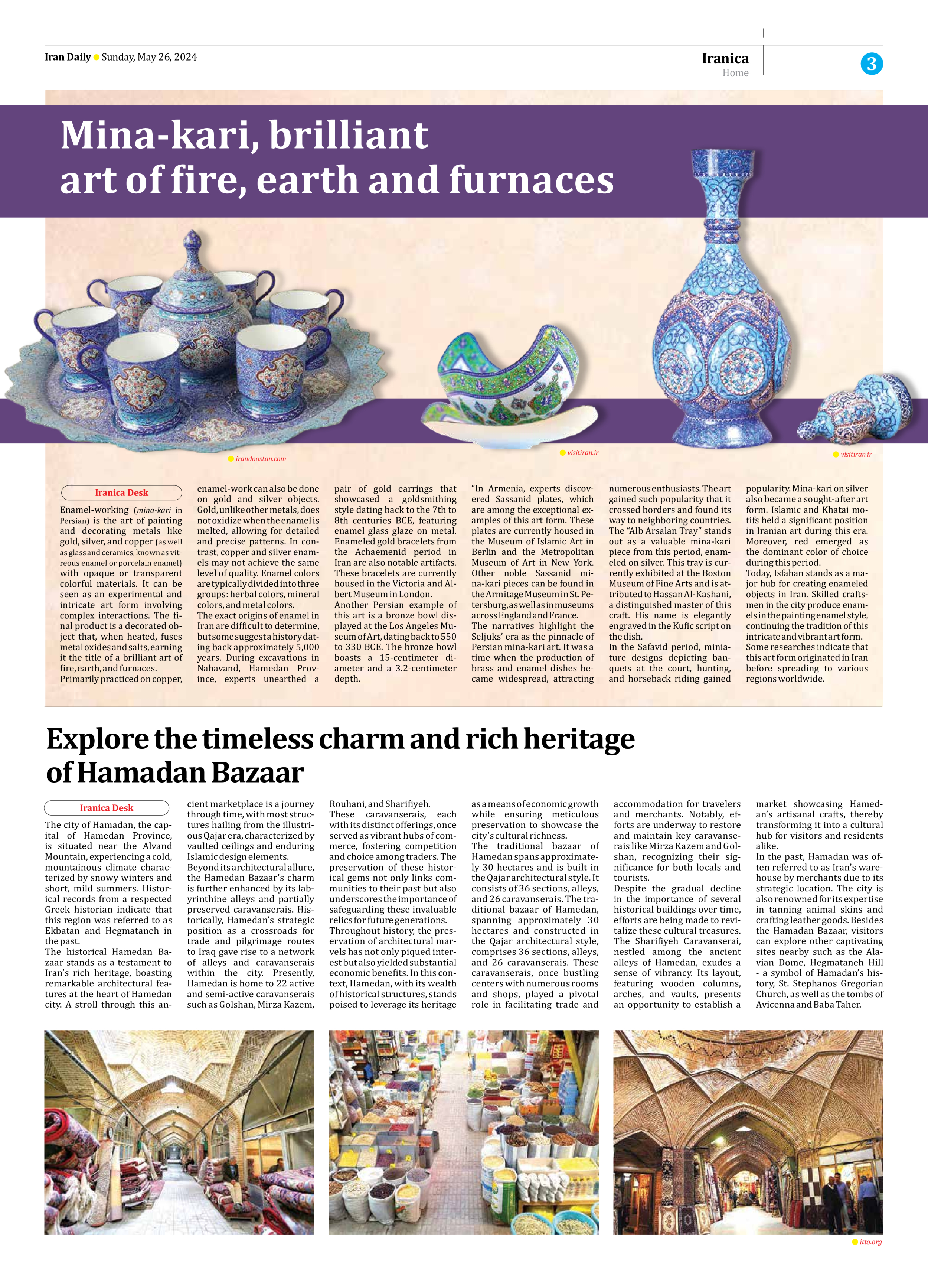
Explore the timeless charm and rich heritage of Hamadan Bazaar
The city of Hamadan, the capital of Hamedan Province, is situated near the Alvand Mountain, experiencing a cold, mountainous climate characterized by snowy winters and short, mild summers. Historical records from a respected Greek historian indicate that this region was referred to as Ekbatan and Hegmataneh in the past.
The historical Hamedan Bazaar stands as a testament to Iran’s rich heritage, boasting remarkable architectural features at the heart of Hamedan city. A stroll through this ancient marketplace is a journey through time, with most structures hailing from the illustrious Qajar era, characterized by vaulted ceilings and enduring Islamic design elements.
Beyond its architectural allure, the Hamedan Bazaar’s charm is further enhanced by its labyrinthine alleys and partially preserved caravanserais. Historically, Hamedan’s strategic position as a crossroads for trade and pilgrimage routes to Iraq gave rise to a network of alleys and caravanserais within the city. Presently, Hamedan is home to 22 active and semi-active caravanserais such as Golshan, Mirza Kazem, Rouhani, and Sharifiyeh.
These caravanserais, each with its distinct offerings, once served as vibrant hubs of commerce, fostering competition and choice among traders. The preservation of these historical gems not only links communities to their past but also underscores the importance of safeguarding these invaluable relics for future generations.
Throughout history, the preservation of architectural marvels has not only piqued interest but also yielded substantial economic benefits. In this context, Hamedan, with its wealth of historical structures, stands poised to leverage its heritage as a means of economic growth while ensuring meticulous preservation to showcase the city’s cultural richness.
The traditional bazaar of Hamedan spans approximately 30 hectares and is built in the Qajar architectural style. It consists of 36 sections, alleys, and 26 caravanserais. The traditional bazaar of Hamedan, spanning approximately 30 hectares and constructed in the Qajar architectural style, comprises 36 sections, alleys, and 26 caravanserais. These caravanserais, once bustling centers with numerous rooms and shops, played a pivotal role in facilitating trade and accommodation for travelers and merchants. Notably, efforts are underway to restore and maintain key caravanserais like Mirza Kazem and Golshan, recognizing their significance for both locals and tourists.
Despite the gradual decline in the importance of several historical buildings over time, efforts are being made to revitalize these cultural treasures. The Sharifiyeh Caravanserai, nestled among the ancient alleys of Hamedan, exudes a sense of vibrancy. Its layout, featuring wooden columns, arches, and vaults, presents an opportunity to establish a market showcasing Hamedan’s artisanal crafts, thereby transforming it into a cultural hub for visitors and residents alike.
In the past, Hamadan was often referred to as Iran’s warehouse by merchants due to its strategic location. The city is also renowned for its expertise in tanning animal skins and crafting leather goods. Besides the Hamadan Bazaar, visitors can explore other captivating sites nearby such as the Alavian Dome, Hegmataneh Hill - a symbol of Hamadan’s history, St. Stephanos Gregorian Church, as well as the tombs of Avicenna and Baba Taher.







